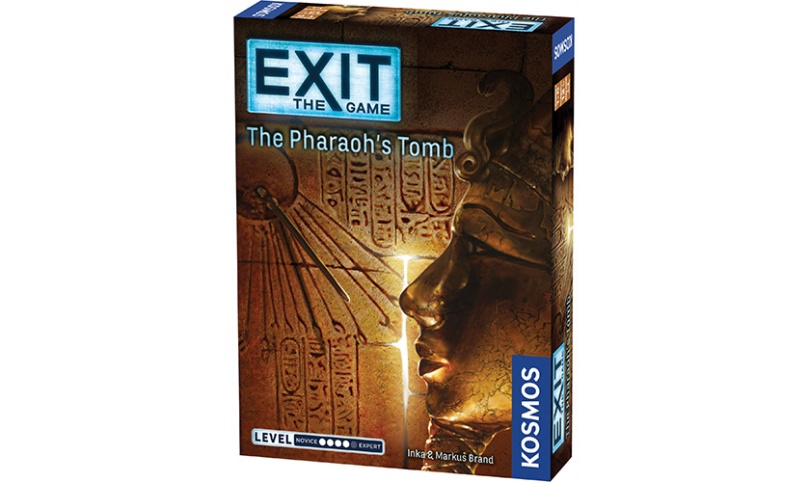My grandfather had dedicated his life to discovering a certain tomb in Egypt. One day I receive a letter from him – he has discovered the tomb, but is now too old to explore it himself. Armed with his notes I enter The Lost Tomb to discover the treasures within.
General Details
“The Lost Tomb”
Quest Room, 13 Cordelia Street, South Brisbane 4101
60 minutes
2-6 players allowed
Listed difficulty: Challenging
Website
How We Played
21 April 2018
2 players
Succeeded
Hints: 1
53 minutes
The Experience
As I have come to expect from Quest Room, The Lost Tomb envelops you in a beautiful, convincing space. Armed with a flickering torch each and a few dog-eared pages of notes, we crawled, lifted, turned, pushed and explored our way through the pitch-black tomb.
The puzzles all feel very appropriate to the Tomb Raider vibe, including ancient riddles and carvings to ponder. Quest Room has put a great deal of effort into ensuring every prop feels like it belongs and they have succeeded admirably. Everything feels like it belongs. One prop has a particularly magical effect that will make you feel like Indiana Jones.
It is important to note that this room has some accessibility issues as it requires crawling. There isn’t any way around this built into the room unfortunately and the crawling section is right at the start, meaning those with mobility issues will miss almost the entirety of The Lost Tomb.
Speaking of accessibility, this is also a dark room. The torches are thematically perfect, but people who have difficulty with darkness may wish to make their concerns known to the gamemaster just in case. There are no scary elements in the room – it is just dark.
Puzzle Design
The Lost Tomb features a path-based structure in which a series of puzzle strands contribute to an overarching goal. Each of these paths is logically connected not only to the theme but to the overall goal, and each results in a satisfying discovery.
Due to the open structure, large teams may find they can blitz this room without much trouble since there are not a huge number of puzzles. I actually found a team of two to be perfect, as we each contributed to all puzzles and got to see everything. There are some really fun moments in The Lost Tomb, and in a larger group you may not get to see everything.
We had some problems with the darkness obscuring an important detail in a certain puzzle, creating considerable confusion. The owners are aware of this, and I suspect it will be fixed soon. There are also a couple of hidden items that are a little tricky to find because players may assume certain props are not moveable. When a room has so many automated components, it becomes easy to expect that everything will just open automatically. Your mileage may vary on this point – I tend to be pretty slack when it comes to experimenting with props, so often miss hidden items.
At the start of the room you receive notes from your Grandfather, which was a really nice way of tying all the puzzles into a something that felt cohesive. The notes provide pieces of information that are relevant to different puzzles, which ensures everything feels connected even though each puzzle belongs to its own path. It also allows for some puzzles that incorporate Egyptian mythology and hieroglyphics in a manner that flows nicely and doesn’t feel forced.
The Bottom Line
The Lost Tomb is an immersive room with tactile puzzles that make you feel like Indiana Jones or Lara Croft. It’s unlikely to tax anyone’s critical faculties, but everything in it is physical and satisfying. Even though it has an open puzzle structure, I think it is better for a smaller team due to some chokepoints and the fact that a large team could spread out and blitz through the puzzles very quickly. It is also very important that no members of the team have mobility issues. If you enjoyed the style of Quest Room’s Sherlocked room, I definitely recommend booking yourself into The Lost Tomb.









